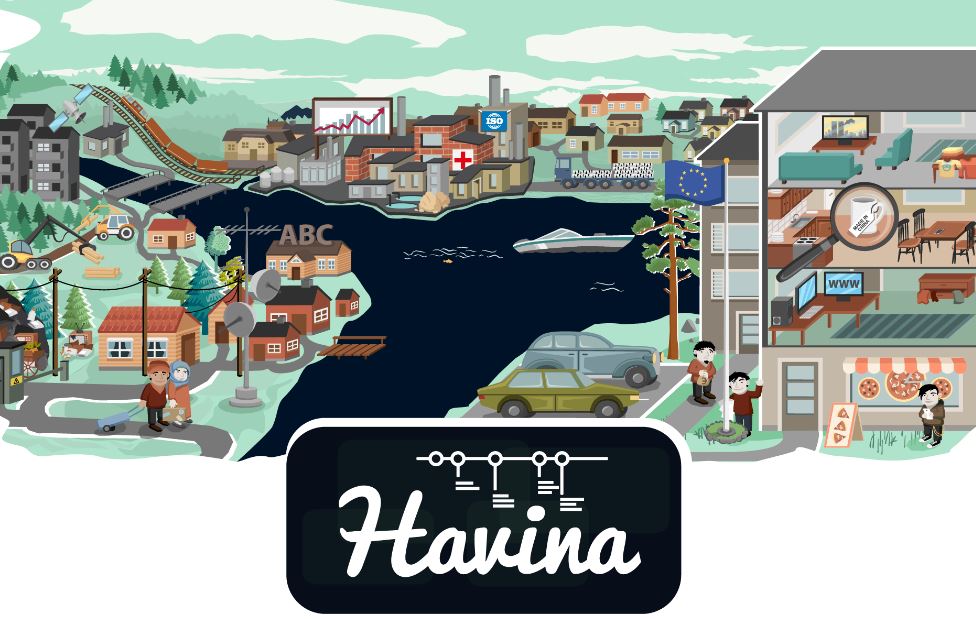Time travel through Finnish bioeconomy takes you from Ice Age to future

A new online application shows how strongly forests have always been part of Finland’s history and development. The Havina learning material is designed for 15-year-old schoolchildren, yet it offers insights and new perspectives for adults, too.
In honour of Finland’s centenary celebration, the Finnish Forest Association has created a new overview of Finnish bioeconomy and its development. The learning material ‘Havina – time travel through Finnish bioeconomy’ illustrates how the Finns have utilized renewable natural resources and innovations based on them for thousands of years.
With the online application the user can move back and forth in history along the timeline. Numerous texts, images and videos tell the great story of bioeconomy – which in Finland equals the use of forests. To illustrate the full significance of forests for this northern country, information on bioeconomic innovations is combined with facts describing changes in society and with world events.
“In Finland, the important events in history are all related to forests in some way. The Havina app helps you to notice the cause-and-effect relationships. It tells you how, but also why, forests were used at different times and situations,” Ms. Pirjo Piesala, the author of the learning material, says.


Piesala cites the need for information and the spread of literacy, which led to an increase in paper production. Before that, the invention of the steam engine was what got the timber moving in Finland, thanks to new ships and locomotives enabling more efficient transport.
There exists a wealth of material about Finnish forests and forestry. Many recent bioeconomic innovations are based on insights from long ago. Modern know-how and technology will modify them for the requirements of today.
Wood, as Finland’s most significant renewable resource, has always also been used for purposes other than paper, energy or construction: for example, wearing apparel. Design labels such as Finnish Marimekko produce dresses from cellulose fibre, and in earlier times, paper was used to construct corsets.
Bioeconomy is an excellent topic for multidisciplinary learning
Havina is predominantly designed as a teaching resource. The new national curriculum encourages the crossing of borders of traditional school subjects. In multidisciplinary learning, such materials as the Havina app are used in many different subjects: mother tongue, chemistry, visual art and religion classes, to name a few.

“Havina is easy to use and can be adapted to different needs. The teacher can apply only a small part of it, or pupils can compare different time periods from the perspective of a particular subject,” says Piesala.
Herself a biology and geography teacher, Piesala finds that forest makes an excellent topic for multidisciplinary learning. This is particularly true in 2017, when Finland celebrates its 100th anniversary and both looks back at its history and strives to find solutions for the future.
“It is very important to identify both your own roots and those of your society. For Finns, they are strongly anchored in the forest,” says Piesala.
Future is anticipated in some of the video clips in Havina. The clips come from the science documentary ‘The future of Finland’ which attempted to determine the kind of know-how that Finland will need in the following decades. A significant part of the documentary was devoted to the potential of bioeconomy.
Havina users can also test their learning. For correct answers to questions they receive points, which they can use to decide the direction of future development.
Bioeconomy knowledge for the forestry professionals
“Phenomena cannot be properly studied through a single subject. In the same way, bioeconomy is cross-disciplinary – it is chemistry, energy, forest management and, say, garment technology”, says Ms. Sirpa Kärkkäinen, who has long experience in the production of forest-related learning materials at the Finnish Forest Association.
Kärkkäinen believes that thanks to crossing the traditional borders between school subjects and industries, Havina also teaches cooperation. “The application shows that working together and from different perspectives leads to a richer result.”
Kärkkäinen hopes that forestry professionals will use Havina as a tool for illustrating the content of bioeconomy. It is possible to follow the timeline from the ice age to the present day and to the future, or the user can select a specific story to show.
“The app has actually helped me to gain a more comprehensive picture of specific time periods as well,” says Kärkkäinen.
In addition, the application offers numerous interesting nuggets of information, such as this: in the early 1900s, there were only a few dozen elks in Finland, and they had to be protected from hunters. Today the elk population is strong, and permits for shooting several tens of thousands are issued yearly.
The Finnish Forest Association also publishes the forest.fi webpage. The Bioeconomy Application Havina was funded by the Metsämiesten Säätiö Foundation, the Ministry of Agriculture and Forestry, the Aili and Yrjö Rasi Foundation, the Kolli Foundation and Föreningen för Skogskultur. The video clips based on Franckmedia’s science documentary were made with support from the Wihuri Foundation. The technical producer is NordicEdu Oy.
The free online application is only available in Finnish, but it is still worth taking a look at. On the front page, choose ´Siirry peliin´ > ´Kirjaudu vierailijana’ > Pelaa [Start game > Register as visitor > Play]. After that choose any time period (at the page top) and theme (on the left). Then click at ‘Tutki aikajanaa’ [Study timeline] and you will see how the landscape in Äänekoski – a typical small forest industry town in Finland – changes over the years.
Kirjoita kommentti